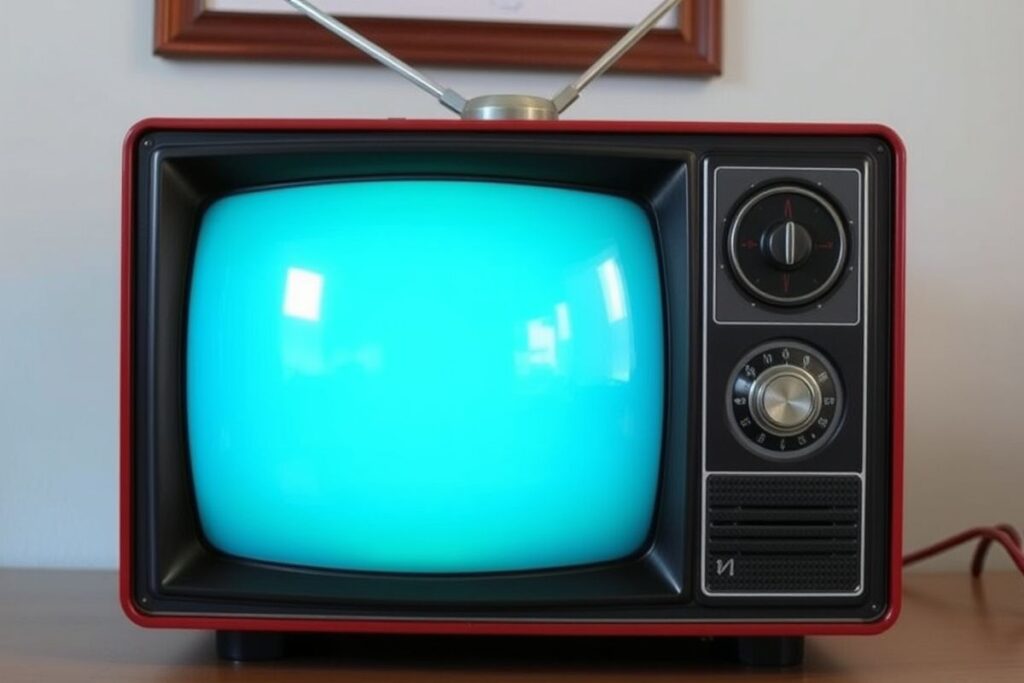Step back in time and infuse your home with nostalgic charm. Retro TVs are more than just vintage electronics; they’re statement pieces, conversation starters, and a portal to simpler times. This guide unveils the secrets to discovering these treasures, transforming your living space into a retro haven. Whether you’re a seasoned collector or a curious novice, these 10 insights will equip you with the knowledge to navigate the world of vintage televisions. From flea markets to online auctions, uncovering these iconic pieces can be an adventure. Retro TVs offer a unique blend of vintage aesthetics and functional design. Imagine the warm glow of a vintage screen casting a cozy ambiance in your living room. Discover the thrill of the hunt and the satisfaction of displaying a piece of television history. This guide will empower you to find the perfect retro TV to complete your themed home interior.

Sourcing Your Retro TV
Flea Markets and Antique Shops
Flea markets are a treasure trove for vintage finds. Arrive early for the best selection and be prepared to haggle. Inspect the TV carefully for any damage and inquire about its history.
Antique shops often curate higher-end retro items. These TVs may be pricier but often come with a guarantee of authenticity and quality.
Building relationships with vendors can be invaluable. They can alert you to new arrivals that match your specific criteria.
Online Marketplaces
Online platforms offer a vast selection of retro TVs. Compare prices and read reviews before making a purchase. Be wary of scams and ensure secure payment methods.
Specialized forums and groups dedicated to vintage electronics can be valuable resources. Connect with other enthusiasts and gain valuable insights.
Utilize specific search terms to narrow down your search. Include keywords like “vintage,” “retro,” and the specific brand or model you’re seeking.
Estate Sales and Auctions
Estate sales can be a goldmine for unique vintage items, often offered at competitive prices. Attend previews to assess the condition of the TVs and plan your bidding strategy.
Auctions can be a thrilling way to acquire a retro TV. Set a budget beforehand and be prepared for competitive bidding.
Research the auction house and its reputation to ensure a legitimate and reliable experience.
Evaluating Your Retro Find
Assessing the Condition
Carefully examine the TV for any physical damage, such as cracks, scratches, or missing parts. Check the screen for burn-in or other imperfections.
Test the functionality of the TV if possible. Ensure that it powers on and that the picture and sound are working correctly.
Consider the age and rarity of the TV. Older and rarer models may be more valuable, even with minor imperfections.
Technical Specifications
Understand the different types of retro TVs, such as CRT, console, and portable models. Research the specific features and capabilities of the model you’re interested in.
Consider the compatibility of the TV with modern devices. You may need additional equipment to connect it to current technology.
Research the availability of replacement parts. Older TVs may require specialized parts that can be difficult to find.
Authenticity and Value
Verify the authenticity of the TV by checking for manufacturer markings and serial numbers. Compare the TV with documented examples online or in collector’s guides.
Research the market value of similar models to determine a fair price. Consider factors such as condition, rarity, and demand.
Consult with experts or appraisers for a professional evaluation of the TV’s authenticity and value.
Incorporating Retro TVs into Your Interior Design
Styling Tips
Use the retro TV as a focal point in your room. Arrange furniture and décor around it to create a cohesive look.
Complement the TV with vintage-inspired décor, such as mid-century modern furniture or retro posters.
Consider the color and style of the TV when choosing its placement. A brightly colored TV might stand out in a neutral room, while a wooden console TV might blend in with a more traditional setting.
Functional Use
Decide whether you want to use the TV for its original purpose or as a decorative piece. If you plan to use it, ensure it’s compatible with your current technology.
Consider using the TV as a display for vintage media, such as VHS tapes or old game consoles.
Repurpose the TV cabinet as storage or a display shelf for other collectibles.
Creating a Themed Room
Choose a specific era or theme for your room, such as the 1950s diner or the 1980s arcade. Select a retro TV that matches the style of your chosen theme.
Incorporate other vintage elements into the room, such as furniture, lighting, and accessories.
Use the retro TV as a centerpiece to tie the room together and create a cohesive atmosphere.
Maintaining Your Retro TV
Cleaning and Care
Clean the TV regularly with a soft, dry cloth. Avoid using harsh chemicals or abrasive cleaners.
Store the TV in a cool, dry place away from direct sunlight and moisture.
Handle the TV with care to avoid damaging the delicate components.
Technical Maintenance
If you plan to use the TV regularly, consider having it serviced by a qualified technician. They can check for potential problems and make necessary repairs.
Research online forums and communities for troubleshooting tips and advice.
Keep the TV unplugged when not in use to prevent electrical surges and damage.
| Feature | Benefit |
|---|---|
| Vintage Aesthetics | Adds character and charm |
| Conversation Starter | Sparks interest and nostalgia |
| Unique Design | Stands out from modern TVs |
- Shop at flea markets and antique stores.
- Explore online marketplaces and forums.
- Check estate sales and auctions.

Leave a Reply